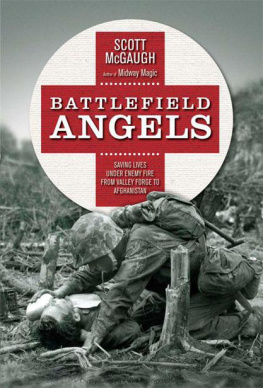Border States that held slaves but stayed in the Union.
Some residents chose to fight with the Confederate Army.
 BEFORE YOU READ ON
BEFORE YOU READ ONBlood and Germs is the story of medicine during the Civil War, a conflict that involved as many as 4 million American men. Because the war was fought mainly on land, the majority of them were army soldiers, far outnumbering navy sailors. My story focuses on the armies.
In July 1862, the Union army began allowing African Americans to enlist, and in May 1863, it established the United States Colored Troops. Some black men were already sailors in the U.S. Navy. Many who volunteered lived in the North. Others were former slaves who escaped to Union-controlled areas of the South. During the Civil War, approximately 180,000 African American men served as soldiers and 20,000 as sailors.
A black soldier (left) and sailor who served in the Unions military.
Historians believe that the medical care of northern and southern soldiers was similar. But records from the war are incomplete and sometimes inaccurate. Statistics in this book are current estimates.
Union (left) and Confederate soldiers
Union (left) and Confederate sailors
Few official Confederate medical records survived the war. When the Rebel government evacuated its capital, Richmond, Virginia, in April 1865, out-of-control fires destroyed the office of the southern armys surgeon general, where these records had been stored.
After the war, the U.S. government published the multivolume Medical and Surgical History of the War of the Rebellion. Besides the Norths medical records, the history incorporated information collected from surviving records of southern hospitals and individual Confederate surgeons.
Thousands of photographs of Civil War scenes were taken by northern photographers, particularly those working for Mathew Brady. Many have been preserved. Photographs from the South are rarer. Blood and Germs, therefore, contains more images depicting Union activities than Confederate. Most of the individual medical photographs and cases in this book involve Union soldiers in U.S. Army hospitals. The Confederate soldiers who appear in these photographs were prisoners.
Richmonds ruins, April 1865
A Currier & Ives print depicts the Battle of Fair Oaks (the Norths name)/Seven Pines (the Souths name), fought May 31 and June 1, 1862, in Virginia. During the nineteenth century, a New York company owned by Nathaniel Currier and James Merritt Ives published popular prints like this one. Scenes were created after the event and werent necessarily accurate.
A note on terms:
Military doctors were called surgeons, even though they didnt all perform surgery.
Soldiers of the United States Army (the North, or the Union) were called Federals or Yankees. Soldiers of the Confederate States of America Army (the South, or the Confederates) were called Rebels.
Both armies were divided into groups stationed in different regions of the country. For example, the Unions Army of the Potomac and the Confederates Army of Northern Virginia fought in the eastern states.
When soldiers enlisted, they joined a regiment of about 1,000 men. The initial size varied, and it decreased as men left because of injury, illness, or death. Regiments were part of larger groups within the armies, such as brigades and divisions.
The North and South had different names for some of the battles. To avoid confusion, the first time I refer to any of these, I indicate both names. Subsequently, I use only the Norths name, which is more common today.
A Confederate (left) and Union soldier pose with their muskets.














 BEFORE YOU READ ON
BEFORE YOU READ ON





